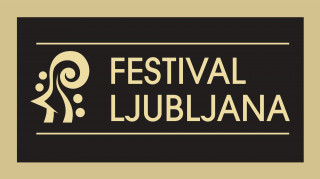Important information
Leon Zakrajšek’s recent works, which he has been painting since last summer as an artistic reflection of the summertime experiences of the limitlessness and timelessness of the blue of sky and sea, reveal to us, through an entirely new gaze and an original artistic language, the magnitude of the artist’s perception of this world in all the glorious dimension of understanding of the universe in all its manifestations. Of cosmic spacelessness and timelessness. With the symbolism and the purity of line that are constant characteristics of this artist, traceable since his beginnings in the second half of the 1980s, when after completing his training at the Ljubljana Academy of Art and the Centre Internacional de Recerca Gràfica in Calella (Spain) he drew on and expressed himself in the tradition of and with a reliance on the artistic language of Western modernism, philosophical thought and numerous current artistic theories of that time and space, but also in his second period beginning in the second half of the 1990s, after training at Tama Art University in Japan and a printmaking studio in Yokohama, where he took his first steps into the world of Japanese culture and artistic techniques previously unknown to him. With the clarity of an artistic message captured in the distinctiveness of his own drawing or painting on a background. In artistic techniques that combine and enhance. Like a fusion of past and present. Like duality in oneness and oneness in duality. Including in the dimensions of the symbol and the sign. Yet surreptitiously, like the visible in the invisible or the visible in visible. Of the symbol that, in his works to date, reveals as much as it conceals or, as Georges Gurvitch puts it, “il cache en dévoilant et révèle en cachant.” And of signs, which differ significantly from symbols and are, like object and subject, alien to one another. In such a way that there is no need for us to classify symbols separately or cram them into cosmological, metaphysical, ethical, religious, technological or psychological categories. No need to understand and compare the symbolic according to Lacan, Freud or Lévi-Strauss, as proposed by Jean Chevalier, an authority on symbols. Zakrajšek’s most recent works simply speak to us. They possess us. They touch us. In them there is a synthesis of all his searching to date: the perception of an abstraction that has touched geometrism and minimalism, abstract expressionism and gesturalism with reminiscences of Hartung and De Kooning, nature as inspiration and incentive, but also the techniques and approaches of Harumi Sonoyama, Fumio Kitaoka, Yuki Rei and Seiko Kawachi. Great Japanese artists who opened new vistas and new paths to him. And with all this, a respect for all the groundbreaking innovations introduced to Western art by the Renaissance, and even earlier by the Florentine painter and architect of the Late Middle Ages whom we know as Giotto, who fascinated him with that perfect circle from the anecdote that tells how “he drew a perfect circle in a single stroke for the Pope, who wished to test his craftsmanship.” This is the origin of his fascination with the stroke as a single flourish, which culminated years later in the cycle Enso–Krog, with nature, symbolism, philosophy and religion. This is the origin of his desire to investigate further. And from other roots.
An undoubted turning point came in 1997. Until then he had expressed himself through the painting and printmaking techniques familiar to Western art, exploring them in depth – particularly traditional printmaking techniques. He then began to develop the ancient techniques that have been part of Chinese and Japanese art for centuries. With patience and deep commitment, he absorbed the skills of the calligraphy and painting technique involving the use of sumi, or black ink, where every stroke is important, every flourish is decisive, and where the whiteness and structure of the paper also play an important role. Where the message is drawn by the touch of the artist’s hand with refined control of the brush and its motion and the controlled pressure of the hand during the momentary pull. Without corrections. Without additions. In a search for perfection. Where reflection, empathy, decision and action are in the foreground. But above all inner peace and inspiration. The internalisation of ritual painting. New gazes and spiritual depth.
Leon Zakrajšek understood his training in Japan as a way of “discovering the Spirit of the East through understanding of the sumi technique,” as Igor Žic so aptly put it. A two-thousand-year-old technique that includes black ink with a starting point in the total blackness of the “first night, when the stars began to shine, where different gradations are obtained by means of washes”. Sumi-e, a monochromatic Japanese art form using black ink, originally developed in the China of the Sung Dynasty, was brought to Japan by Zen Buddhist monks in the mid-fourteenth century. Today the term is recognised and used around the world. Sumi-e is an art that is deeply rooted in Zen and combines many of the principles of Zen aesthetics, including simplicity and the idea of the maximum effect created from the minimum. The philosophy of sumi-e encompasses both contrast and harmony, but also the expression of simple beauty, elegance and contemplation, where the black ink speaks in a variety of gradations and shades; where the interplay of empty, white space and monochromatic brushstrokes ranging from light grey to black comes to life; where the picture is constructed by an effective selection of light and dark elements; where powerful strokes represent the simplicity of artistic expression. It also encompasses a connection with the spiritual pole of life and the meditative quality of the process. In this process it is the moment – unique and unrepeatable – that is important. There is only the here and now. Like a metaphor of life: it is not possible to achieve perfection or to master the art of life, since the search for perfection is a journey, but the journey itself is being. Sumi-e is a captured essence. It is the art of searching for deep feelings, where the artist seeks balance, rhythm, harmony in order to be able to develop patience, self-discipline and concentration. It does not paint the present moment but rather shows its everlastingness. It symbolises the important moment when the mind frees itself from the body and the soul becomes a creative force. After decades of dedicated and humble searching, Leon Zakrajšek has understood, felt, accepted and internalised all this. With his knowledge of Japanese aesthetics – a subject that has enchanted and inspired him just as it did many French and other artists, from Monet and Van Gogh to Vallotton and Marc, more than a century before him – not only has he developed into a master of Japanese painting and calligraphy, but he has become a perspicacious and subtle aesthete, philosopher and artist. He has, in fact, become a fully rounded personality who reveals, with sincerity and sensitivity, the deepest layers of his own inner life, ennobled by his knowledge of traditional Asian and modernist Western European creativity, and who, with an impressive oeuvre of easel painting, oils and acrylics, prints in various techniques (woodcut, aquatint, lithograph, moku-hanga), monotypes and drawings (sumi-e), has for decades been offering, for our pleasure and judgement, a broad spectrum of understandings and experiences rooted in his comprehension of nature and the creative process, but also of Western and Eastern culture and tradition. For decades he has sought synergy, and he also seeks it in his latest works. He seeks symbiosis. An intertwining of the old and the new in the moment of inspiration. Writing about this process in 2011, he explained: “My abstraction has its inspiration in nature and I am constantly seeking fascinating signs from nature, which are transformed into abstract language. Depending on the inspiration of the moment. I express my feelings through the simplicity, harmony and minimalism of a sumi drawing or through the power, richness and energy of colour and of structure in acrylic and oil painting.” This description still applies today, although we can add: colours, lines, strokes, empty space. Precision. Stylisation. Geometric figures. Gesturality. Abstraction. Oil, acrylic, monotype, sumi. All of this continues to define Leon Zakrajšek today. There is something else too: his gaze has become more open, softer. Different. His brushstrokes are more vehement, relaxed and intuitive. His colour palette has unified. Three colours have come to the fore: black, white and blue. The abstract landscape has been born.
Last summer in the Kornati archipelago – the islands glittering in a soul-stirring blend of light and vibrations – carried off the symbols that for the last few years have filled his canvases and paper. It concluded the Enso–Krog cycle in various techniques and the shimmer of a broad palette of colours, and with a symbolic meaning offered by Zen Buddhism: enso symbolises the universe, absolute enlightenment, power, abundance, but also the void. It represents the moment when the mind is freed of the body and the soul becomes a creative force. And this unquenchable creative force has gradually broken down the boundaries that, though creatively set very high, nevertheless allow opportunities for growth and development: they gave flight to the artist’s soul, setting free the gesturality of composition in abstract form and the colour palette of sea and sky. And of earth. Emphasised whiteness and light, softness and undulation. Gave a new rhythm. And above all, revealed the artist’s gaze: in this cycle the Slovene-Croatian painter and printmaker, who in his previous cycle spoke with the power of black and white, to which he added red, yellow and numerous shades of blue, has focused strongly on blue, alongside black and white, enhancing it both with shades and with accents, including symbolic emphases. The cycle before us highlights the stylised signs of soft lines and contours in black-and-white harmony and blue spacelessness with a symbolic element: between sky and earth there is only blue. The Sky, the Temple and the Starry Vault. Blue as a symbol of the beauty of the abstract landscape. The Islands abstract landscape cycle is a new step in the development of an artist who speaks to a wide circle of art lovers and connoisseurs and brings up to date the words written years ago by Igor Žic: “The right measure of tradition and experience, the local and the universal, the intimate and the public, creates a great and important artist. There is no doubt that Leon Zakrajšek is a member of the world’s artistic elite.” The selection of works from the Islands abstract landscape cycle presented in the Knights’ Hall is further proof of this.
Dr Nelida Nemec


